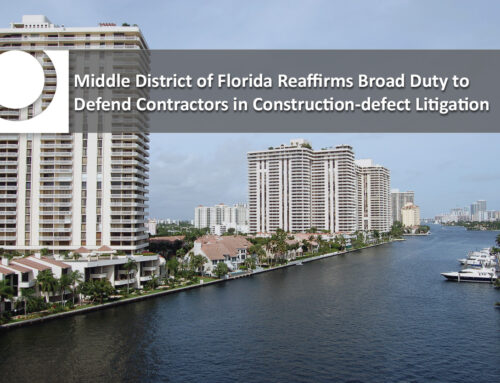In Kaady v. Mid-Continent Casualty Co. (June 25, 2015), the Ninth Circuit recently spurned an insurer’s attempt to conflate two separate losses in an attempt to deny coverage on the grounds that the insured’s pre-policy knowledge of the first loss made the second one a “known loss” that fell outside of coverage.
Randy Kaady was hired to install “cultured stone” over deck posts and wall sheathing on buildings at the Collins Lake Resort near the Mount Hood Ski Bowl. Several months after completing the job, Kaady was called back in September 2006 to inspect several cracks that had appeared in his work, which he attributed to settling and shifting.
 Three months after this inspection, in December 2006 Kaady bought a liability policy from Mid-Continent Casualty Co. In June 2007, the Collins Lake HOA sued its general contractor, who then sued Kaady and other subcontractors, for, among other things, “deterioration of the deck posts and wall sheathing behind the manufactured stone.”
Three months after this inspection, in December 2006 Kaady bought a liability policy from Mid-Continent Casualty Co. In June 2007, the Collins Lake HOA sued its general contractor, who then sued Kaady and other subcontractors, for, among other things, “deterioration of the deck posts and wall sheathing behind the manufactured stone.”
Were the September 2006 cracks the same “loss” as the deterioration alleged in the June 2007 lawsuit? Mid-Continent thought so, denying coverage for the deterioration as a “known loss,” even though Kaady knew only about the cracks when buying the Mid-Continent policy. Mid-Continent’s policy states that it “applies to . . . ‘property damage’ only if…no insured…knew that the…‘property damage’ had occurred, in whole or in part.”
Mid-Continent construed “property damage” in this provision very broadly to mean that an insured’s knowledge about damage to any part of the property (that is, the entire resort) precluded coverage for liability arising out of other property damage, no matter how unrelated. The Ninth Circuit wisely rejected this reason for denying coverage, correctly noting that liability policies, including Mid-Continent’s policy, pointedly distinguish different types of “property” at a project, including work of others and “your work” performed by an insured. The Kaady court didn’t mention it, but the border between property that is “your work” by a subcontractor and property that is damaged by “your work” routinely underpins coverage fights across the country — a distinction that Mid-Continent almost certainly understands, and just as certainly contradicts its coverage-defeating argument in this case.
Buttressing this rejection of Mid-Continent’s view of “property” under the policy, the Ninth Circuit also distinguished the two “types” of damages at issue. Kaady knew only about cracks in his work, which differed from the deterioration to walls and other building components behind Kaady’s work. This distinction, as an aside, also forms the basis of many coverage disputes regarding the number of “occurrences” giving rise to a claim, which matters most often to questions about policy limits, deductibles, and self-insured retentions. But the court held that resolving the causal connection between the cracks and the deterioration could not be done in Mid-Continent’s favor without more evidence.
Disputes in large construction projects like the one in this lawsuit seldom come in neat, single-serving packages related only to certain “property” or “types” of damage. Unraveling these distinctions has just been made a little easier by the Ninth Circuit and its principled refusal to permit Mid-Continent to deny coverage.



